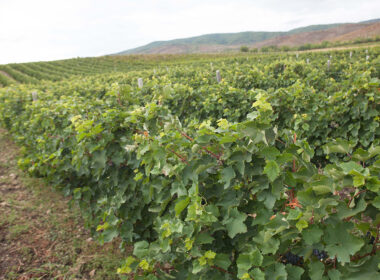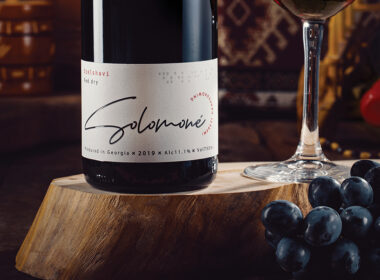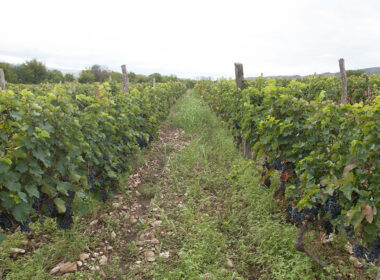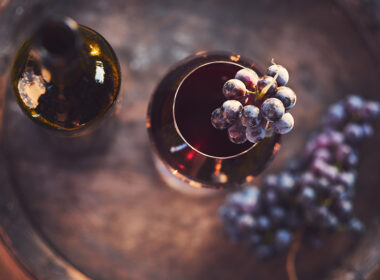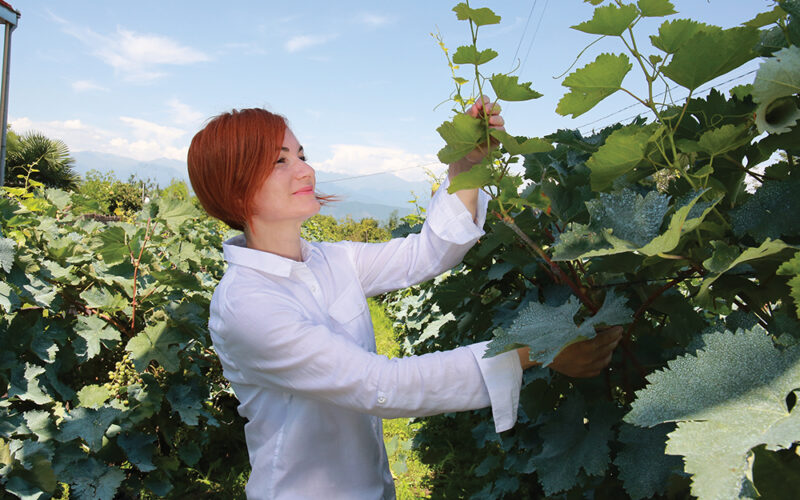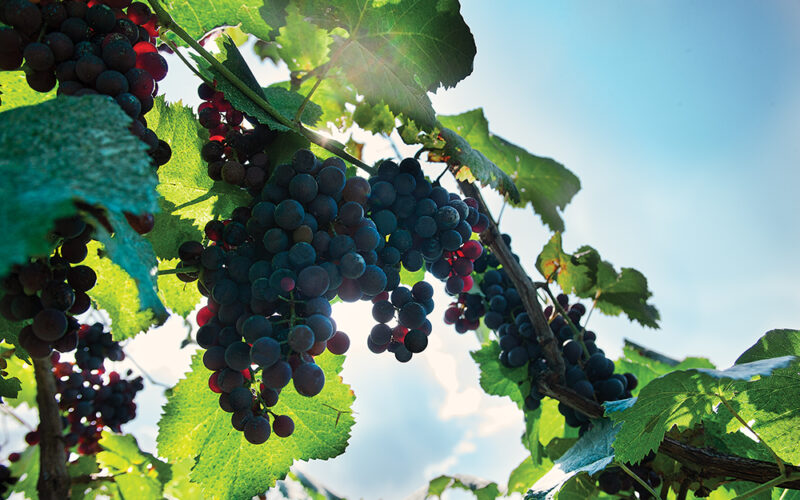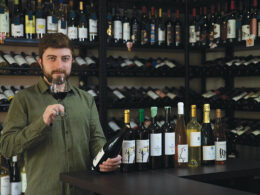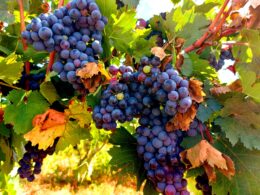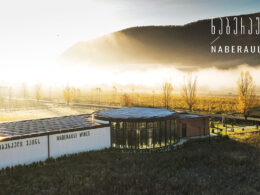“Working with clay, working with qvevri is a remarkable emotion. The clay breathes and gives life to wine”.
This red-haired woman resembles her Kisi – a wine that she especially adores among her Saperavi, Rkatsiteli and Mtsvane. She is Ketevan Aladashvili, KATEWINE winemaker. When you take a glass of her Kisi, you will first feel the mild and harmonious aromas; when you take the first sip, you will feel tannins that give strength and body to this exceptional wine. Keti is just like that: a strong, hardworking woman winemaker, beneath a pleasant and harmonious appearance.
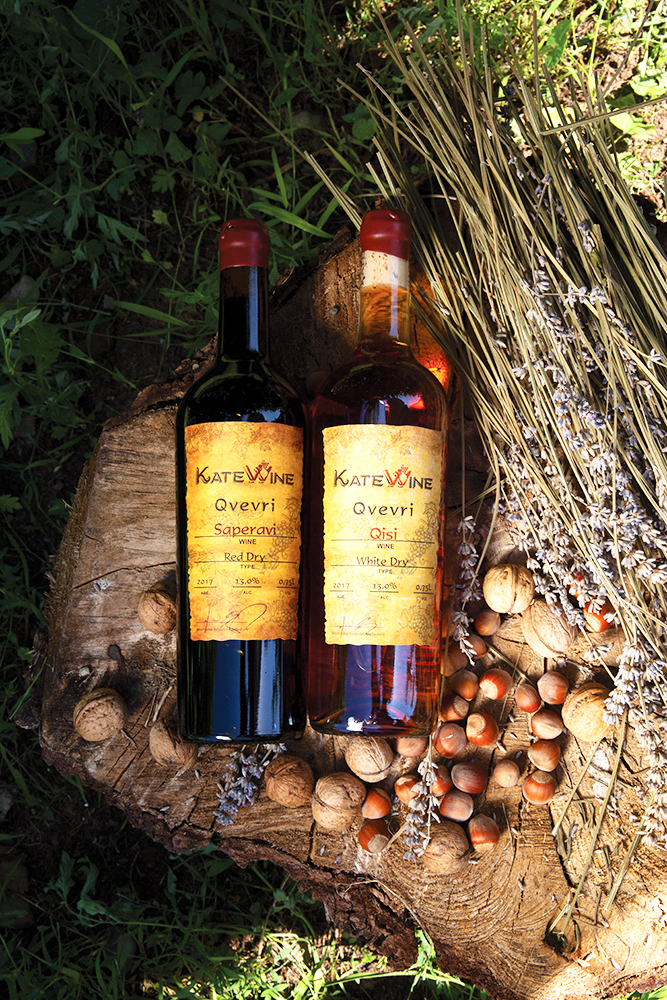
Her earliest memories of wine are the small qvevri (“Zedashe” as Georgians called it for centuries. Only special wines were kept in this sacral vessel and it was always given special care) in her grandparents’ wine cellar. “The place where my grandma and grandpa kept these small qvevri was off-limits, when we were kids. We had to be on our best behaviour around them. Only the head of the household decided when to open Zedashe. I always wondered what was under the smooth stone that my grandpa used to cover qvevri. I knew this had to be a very special wine, so opening it was like a miracle unfolding. Even later on, when I saw these small vessels in temple yards, I was overwhelmed by desire to know what was underneath. My admiration for qvevri and this marvellous liquid definitely started when I was just a small kid,” – Keti remembers.
Kakheti was always a part of her life and so was caring for the vineyard, growing grapes and making wine. Years after, she created KATEWINE winery that now unites all her family members. Her childhood memories and the legacy of her family is now poured into Keti’s wines – her Saperavi, Kisi, Rkatsiteli and Mtsvane. Her Rkatsiteli carries characteristics of a qvevri wine – strong taste and aromas. Mtsvane’s aroma is as tender as its taste, with tones of pine, pineapple and white fruit. It is a truly balanced and harmonious wine.
All three of Keti’s white wines, including Kisi, have a distinguished and memorable characters.
– What about Saperavi?
– My Saperavi is different each year, depending on the weather as well as the grape. I control all wines from the moment they are poured into qvevri. Last year’s Saperavi had such a fully body and tannins that I added stalks in moderation, so as to avoid bringing their bitterness and harshness forward. I even took it off from chacha within a month. I kept in on chacha for three months at first, then four and now – just one month. As for white wines, I usually keep them on chacha for six months.”
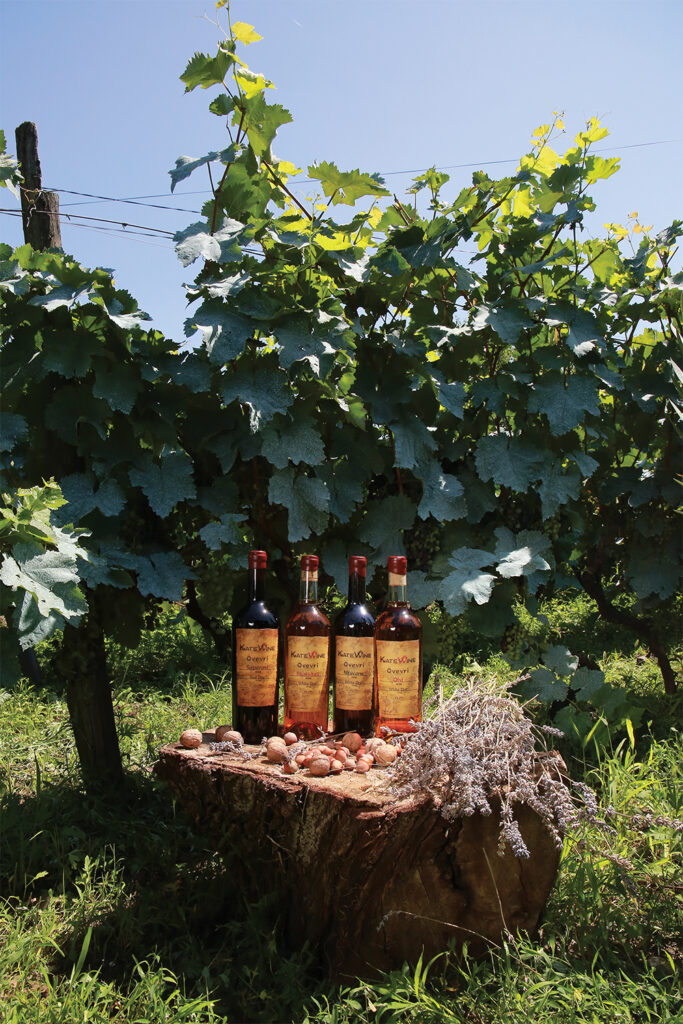
Keti is a winer for whom the whole process of making wine – from caring for the vineyards to bottling – is vitally important and manifold. She knows the importance of being strong and confident, especially being a young woman seeking success in a male dominated industry. She considers growing grapes a crucial part for winemaking. She knows that when it comes to winemaking, patience is paramount. Her glass is never empty, it is always half full. For her, winemaking is a form of art that requires a great deal of work.
KATEWINE is a family business. Keti, her parents and her two sisters take care of their vineyards together throughout the whole year.
“When I was young, we rarely hired help,” – says Keti, “We carried out all the necessary horticultural practices and made wine ourselves. We had smaller vineyards back then, so it was manageable. Caring for vine and wine has been a part of my life since childhood. Being close to soil is so very dear to me.”
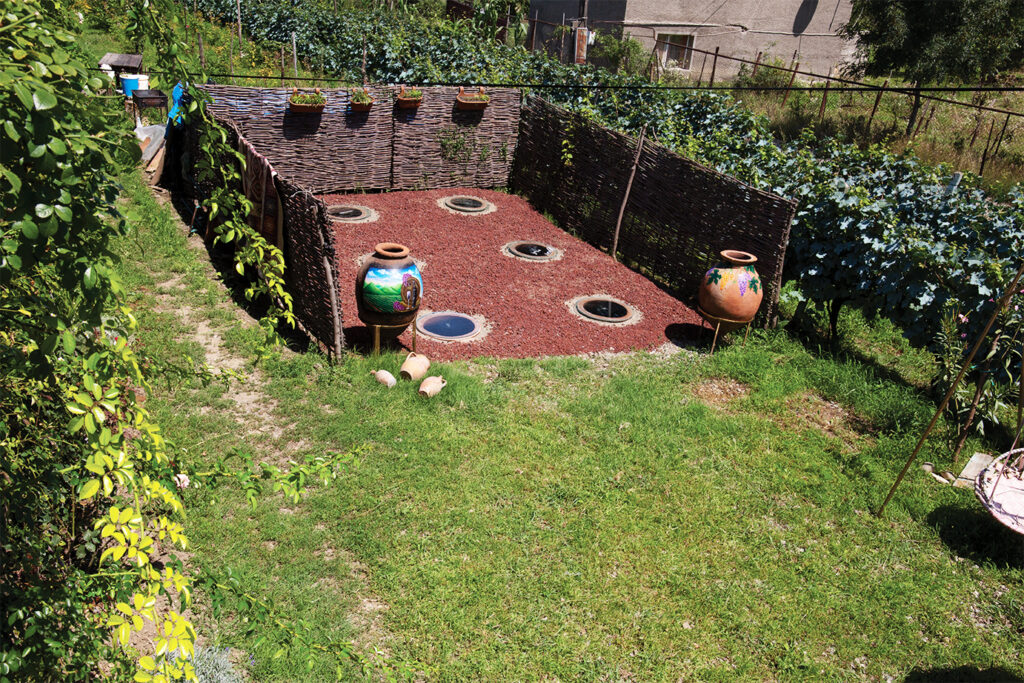
While studying on winemaking faculty, she underwent an internship at one of the wineries. Keti was so impressed with the winemaking process that she decided to complete her master’s degree and is now studying for a doctor’s degree. She chose “The impact of qvevri on wines” as the topic of her doctoral dissertation. Years later, working for a big production (where she holds the position of chief winemaker and wine technologist), she realised that qvevri and qvevri wines were missing from her life. “Working with clay, working with qvevri is a remarkable emotion. The clay breathes and gives life to wine. The moment grape juice hits the bottom of qvevri, my family and I keep our finger on its pulse. We listen to it breath, controlling the fermentation temperature. Before pressing, we careful select bunches and each grape, even the stalks – deciding on the amount to go into each wine. We take turns stirring, keeping the chacha on the surface from drying out, which can create unwanted acidity and bacteria. Such a close contact, almost a conversation with wine is the main charm of qvevri. It lets you know how the wine is feeling, what it needs, what is its essence. Working in a big production, this special bond was missing from my life, so, in 2017, I decided to establish my own winery that would only produce qvevri wines. That’s how KATEWINE was born.”
KATEWINE’s Rkatsiteli and Mtsvane vineyards, in Saniore village, in the region of Telavi were inherited from her grandmother. The soil here is special, rendering high quality of grapes. Good location and appropriately selected grapes for this specific soil and climatic conditions make the grapes from both vineyards aromatic. This is how Keti’s Mtsvane gets its marvellous aromas and tones. These vineyards are exceptionally cared for so the vines produce good grapes for a long time to come. As for Saperavi, its vineyards are located in Kindzmarauli zone (Kvareli district). “
I come here early in the morning, sometimes even at 5 o’clock, one hour before the dawn. It is so beautiful here. The amazing view of Kvareli mountains, the Sun rising, birds chirping – sometimes I even forget I am in the vineyard. Me and my sister Nino, a biologist by profession and now a viticulturist and a manager, put in the most work in this vineyard. Her and my father are the ones that focus on our vineyards. Thanks to us working together, we now created perfect conditions for our vineyards to yield the right amount of grape. We only use wholesome and appropriately chosen materials to care for it. For us, it is not about the quantity, but quality, which is reflected in the character and taste of our wines.”
These are Keti’s qvevri, where KATEWINE wines, so beloved by wine enthusiasts, are made. Ground temperature is controlled at all times, and qvevri are always kept in cool temperatures to ensure the quality of the final product. These qvevri will soon be transferred to a new wine cellar in Saniore, where Keti’s vineyards are situated. A new adventure – from harvest to filling qvevri – will soon start among the mountains of Kvareli and beautiful nature of Kakheti region.
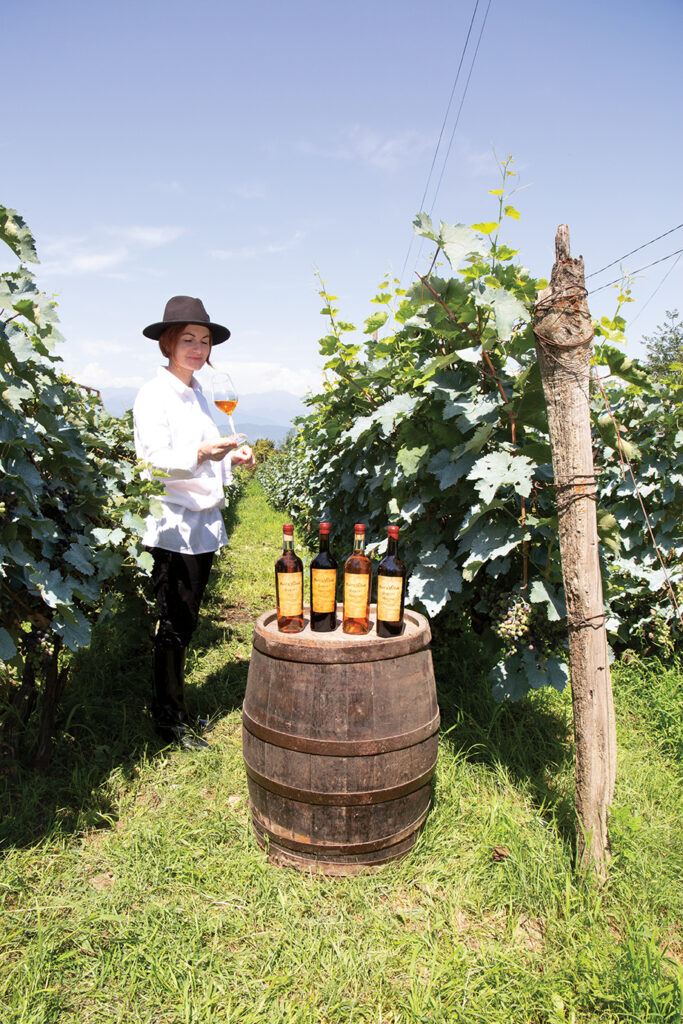
KATEWINE Kisi received her first gold in a wine competition organised by Expo Georgia in 2019. The degustation committee was lead by the British Master of Wine Tim Atkin. This day, filled with emotions, is still alive in Keti’s memory. Later came the acknowledgement and reward received in Poland (where, along with Germany, KATEWINE successfully exports wine).
“Do you want to know what brings me the biggest joy?! Acknowledging our hard work. Sometimes we even burst into tears, when we gather around qvevri, taste the fruits of our labor and exclaim: It is better this year! All the sleepless nights were worth it!
You know it frequently rains in autumn. Our qvevri are outside, so we often get soaking wet, making sure our wine is well cared for.
I have often fallen asleep standing up next to my qvevri. This is a lot of hard work. You have to be fully involved at all times. Wine in qvevri requires copious amounts of attention every hour of the day and night. You have to get up several times at night to visit it, stir it, but somehow the fatigue vanishes with every visit. This process goes on until the wine is bottled. So, every time someone takes a glass of my wine to taste, my breath stops. I look closely to see what my wine evokes in people and try to guess their emotions before they speak. Their feedback, spoken or felt, is so important for me. Do you know what I feel when the feedback is positive? I feel as though I have become taller.”
Keti tastes and rates other wine as well. She has been a member of jury for “Saperavi International” competition, held by Georgian Wine Association, for two years now. She is also a member of National Degustation Commission. She knows how important the quality of Georgian wine is to the international market. She is always objective in her ratings. According to Keti, Georgian winers improve each year, their wines are becoming more and more interesting and prominent. In addition to all her work, she also teaches at BDC Academy in Telavi.

